Impacts on Healthcare Environments on Patients and Families
New Health Insights: Families Face Unmet Needs

Family unit members back up hospital patients emotionally and physically, but these important people in the healthcare process are often underutilized and undervalued. Now, new insights from Steelcase Wellness released today reveal how patient room blueprint tin affect family experiences and date in a loved one's care, and influence patient satisfaction and outcomes.
With the rate of chronic disease growing, the population crumbling, and a projected shortage of healthcare professionals, the role of family members to partner with healthcare professionals during a patient'south intendance is more important than always. The mural is complicated by fiscal incentives tying healthcare providers' reimbursement to patient satisfaction and the prevention of readmissions. This complex healthcare movie elevates the value of family members and other loved ones who surround the patient and are often left without many of the essentials they demand to be comfortable, productive and supportive.
This circuitous healthcare flick elevates the value of family members and other loved ones who environment the patient
These mothers, fathers, children and other family unit members may be the only consistent partner along a patient's journey, and with guidance, tin help hospital staff by providing relevant information, assistance in intendance, and helpful symptom monitoring during or afterwards the patient stay.
"The benefits to family unit involvement in care are well-documented in clinical literature," said Michelle Ossmann, MSN, PhD, Managing director of Healthcare Environments at Steelcase Health. "Family unit and friends who are present at the bedside can reduce patient stress, enhance trust, contribute to safety past helping the staff know the patient, and, ultimately, support positive health outcomes. Well-designed healthcare environments can be a powerful tool in supporting a family's ability to meaningfully engage in their loved one's care, only many hospitals have yet to fully harness their spaces to maximize this appointment."
Well-designed healthcare environments can be a powerful tool in supporting a family'south ability to meaningfully engage in their loved one's care
Steelcase Health sought to meliorate sympathize how families are involved in the healthcare feel, uncover the contribution of environmental influences on family involvement in patient care, and examine how family unit members suit to living in a patient room. Its researchers observed clinicians, patients, family unit members in maternity and pediatric settings, and interviewed healthcare executives, nursing and facilities staff responsible for inpatient developed care across several service lines, including intensive intendance. Additionally, the team explored peer-reviewed inquiry and industry tendency data, and examined case studies about family involvement in patient care.
The Steelcase Health research squad establish that the means in which the physical surround tin support the family member in the patient room are not well understood. Healthcare environments are often not designed to back up the roles that family members play in a patient's journey.
Researchers identified five primal issues that can affect family unit wellbeing and engagement in a patient room:
1. Family members blocked from critical communications
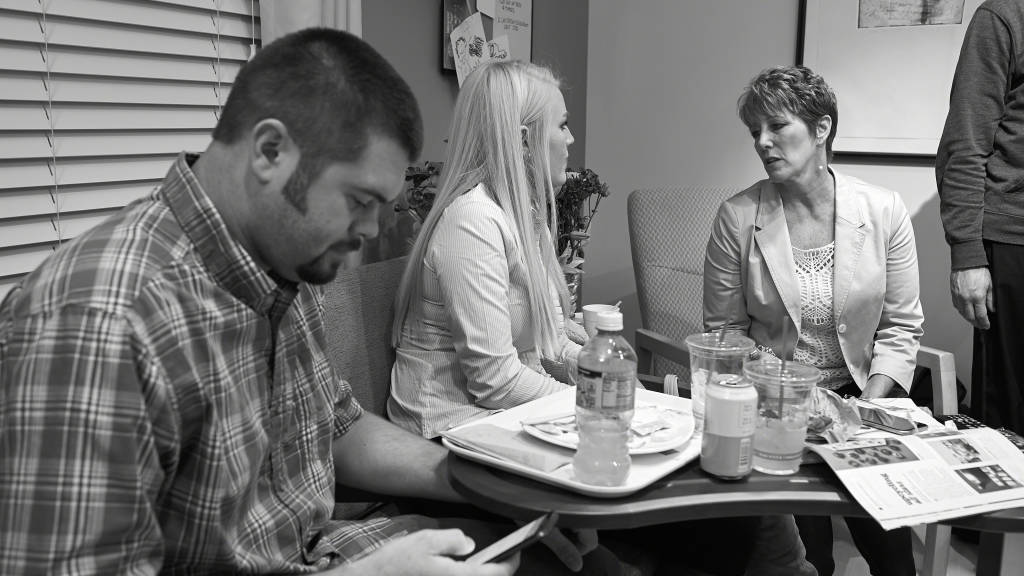
Family unit members often desire to be agile participants with clinicians and the patient, but the layout of nearly healthcare environments does not promote communication. They may be seated in a corner or on the other side of the room — away or blocked from where medical data is delivered to the patient. If able to participate, family unit members can share medical and dietary information, take notes and review test result amidst other things. Effective communication can help family members make a patient'south transition from hospital to dwelling house easier, and assist the patient follow discharge plans preventing emergency room visits and hospital readmission.
two. Difficult sleeping conditions
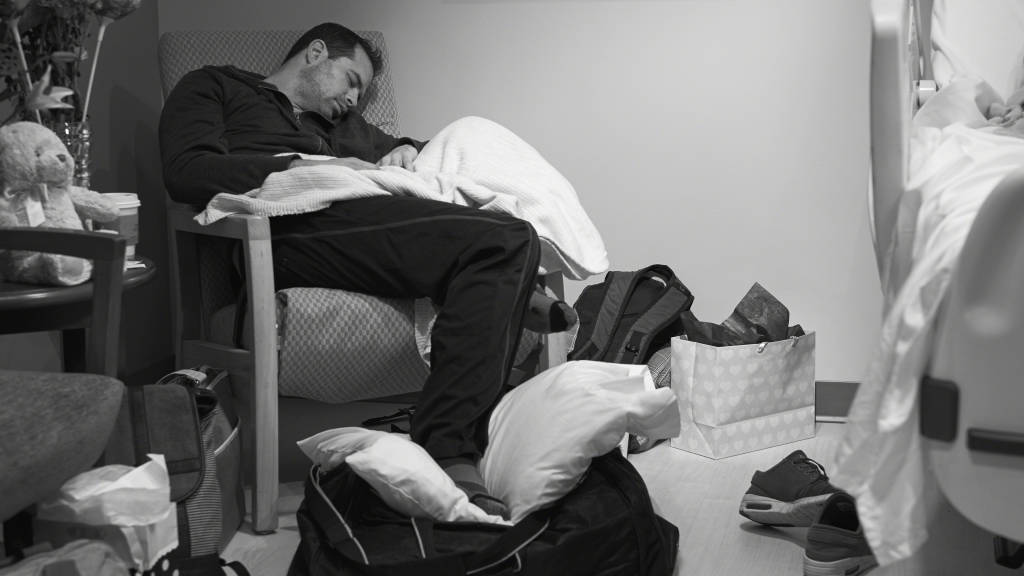
Many healthcare environments cannot comfortably accommodate family members who stay with their loved ones overnight. Family members worry that they will disturb their loved one as they shift and try to get comfortable in the middle of the night. Chairs, temporary cots and in-room sleepers tin can be uncomfortable making information technology more difficult to sleep. Steelcase Health researchers found family unit members improvising their own "beds" using chairs, duffel bags and pillows.
3. No place to share a meal
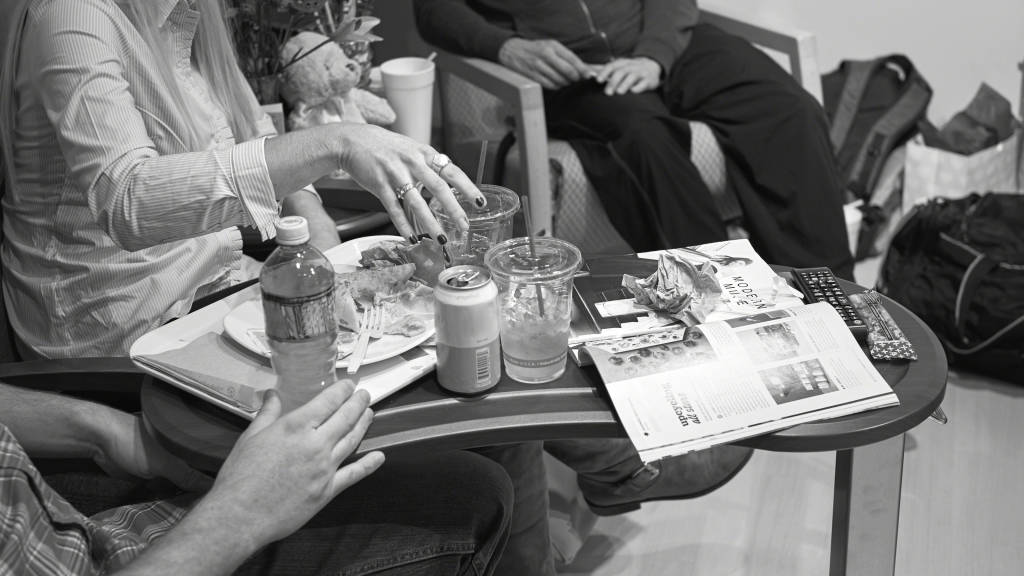
Family members often adopt to eat with their loved ones rather than in the cafeteria, only current healthcare environments practise non support families sharing a meal. Researchers watched as people tried to improvise with whatsoever furniture they could observe. Besides being inconvenient, the situation frequently displaced items needed by the patient and clinicians.
4. Uncomfortable hospitality environs
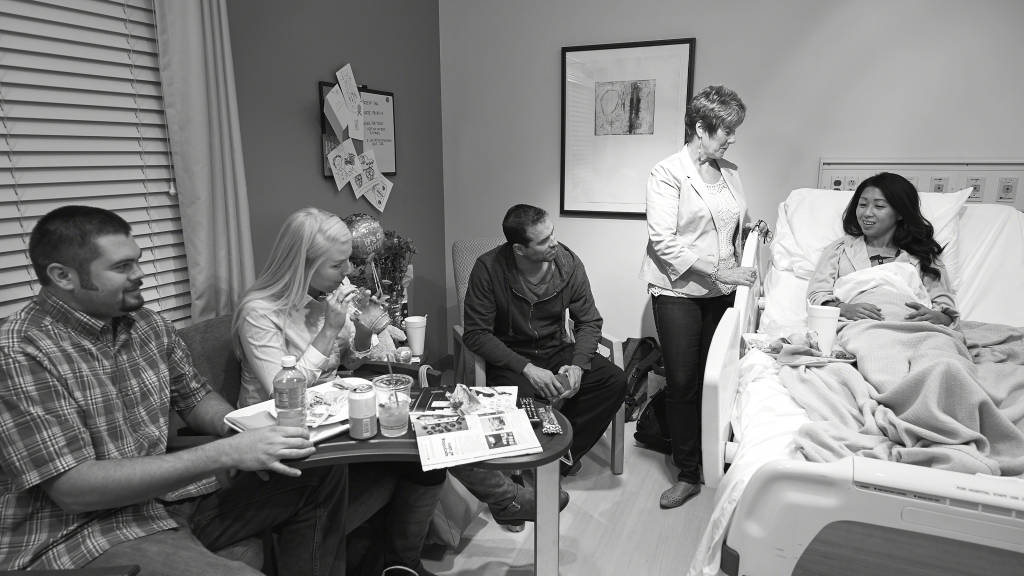
In many hospital settings, limited furniture makes it more than hard to host visitors. In that location's few places to store guests' bags, coats, computers, and bedding calculation to crowding that is bad-mannered and frustrating for guests, patients and hospital staff. Crowding can block admission to medical equipment and impede clinical staff'due south ability to do their job.
5. Nowhere to plug in
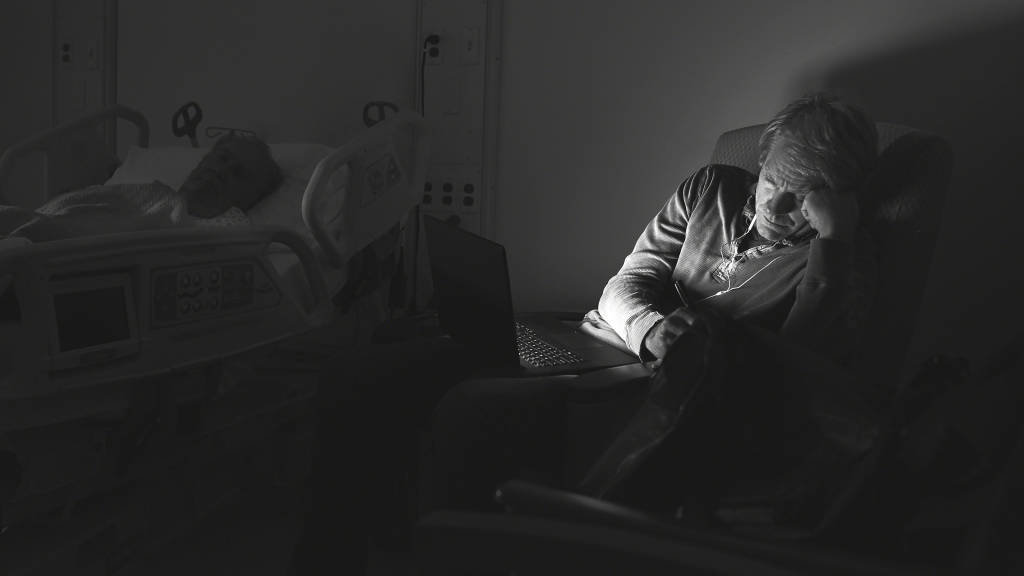
Often family members try to maintain some of their routines, including working from the hospital, while supporting their loved one. In most cases, this requires the utilize of technology. Researchers saw family members struggle to create ad hoc workspaces while their loved ones slept. Their efforts were often complicated by a lack of access to light, power sources, and surfaces to agree paperwork.
"Family unit members are eager to be involved in their loved ones' intendance, but our inquiry shows that healthcare environments often don't support their participation,"
Patricia WangResearcher, WorkSpace Futures, Steelcase Health
"Family members are eager to be involved in their loved ones' care, just our research shows that healthcare environments often don't back up their participation," said Patricia Wang, researcher, WorkSpace Futures, Steelcase Wellness. "Uncomfortable or temporary article of furniture, lack of storage for personal items and feelings of stress near getting in the way of clinicians tin leave family members feeling more than similar an audience than an agile, valued partner in care. This can impact patient, family member and clinician feel."
Welcoming environments
Steelcase Health findings prove that family members need intuitive, welcoming and hosted environments that both back up central needs, such as sleeping, sharing meals and working, and assists them in productively partnering with clinicians to meet their loved one's healthcare needs.
"Creating spaces that encourage family unit involvement is a disquisitional challenge that those who blueprint healthcare environments can work to address," added Wang. "Space constraints, layout, storage concerns, and access to calorie-free and power are all important considerations, along with dynamics such as how elementary information technology is to effectively clean a room or piece of piece of furniture. And, of course, flexibility and adaptability are paramount because there is no one-size-fits-all approach that volition meet the needs of every healthcare setting."
The findings from Steelcase Health bolster inquiry on current healthcare trends such equally patient and provider satisfaction as quality indicators, the focus on patient-and-family unit-centered-care, and the adoption of patient and family unit advisory boards and councils at hospitals and health systems.
For more information nigh Steelcase Health's insights on how healthcare environments can support family interest in patient care, visit www.steelcase.com/health.
Additional Steelcase Wellness WorkSpace Futures Inquiry
Transforming the Examination Room
Better Waiting Spaces
Source: https://www.steelcase.com/research/articles/topics/healthcare/new-health-insights-family-face-unmet-needs/
0 Response to "Impacts on Healthcare Environments on Patients and Families"
إرسال تعليق